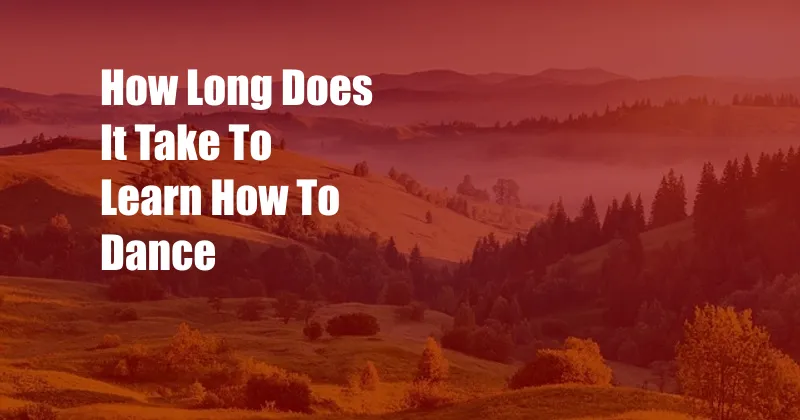
How Long Does It Take to Learn How to Dance?
Dancing, an art form that transcends cultures and time, has captivated hearts and bodies for centuries. Whether you’re a seasoned performer or a novice with two left feet, the allure of dance’s rhythmic spell can be irresistible. But the question that often lingers on the minds of budding dancers is, “How long will it take me to learn how to dance?”
The answer to this question is as varied as the dance styles themselves, but with patience, perseverance, and a dash of passion, anyone can unlock their inner rhythm. Let’s delve into the factors that influence the learning curve and explore some tips to accelerate your journey on the dance floor.
Factors Affecting the Learning Curve
Your dance journey is influenced by several key factors that determine the pace at which you progress:
- Dance style: Each dance style has its unique techniques, steps, and rhythms, which vary in complexity. Ballroom dancing, for instance, requires intricate footwork and coordination, while hip-hop involves more isolations and freestyle elements.
- Natural aptitude: Some individuals possess a natural affinity for dance, with an innate sense of rhythm and coordination. While this can provide an advantage, it doesn’t mean that those without natural talent can’t excel with consistent effort.
- Frequency of practice: The more you practice, the faster you’ll progress. Regular practice sessions help you retain steps, improve muscle memory, and develop coordination.
- Quality of instruction: A skilled and experienced dance teacher can guide you through proper technique, provide constructive feedback, and help you identify areas for improvement.
A Comprehensive Overview of the Learning Timeline
The time it takes to learn how to dance proficiently depends on your individual circumstances and the level of mastery you aim for. Here’s a general breakdown:
- Beginner (6-12 months): In this stage, you’ll learn basic steps, rhythm, and coordination. You’ll gain confidence on the dance floor and develop a foundation for future progress.
- Intermediate (1-2 years): As you progress, you’ll master more complex moves, learn combinations, and improve your overall technique and style. This stage requires dedication and regular practice to refine your skills.
- Advanced (3 years and beyond): At this level, you’ll delve into advanced choreography, refine your performance skills, and explore the intricacies of your chosen dance style. This stage is a continuous journey of growth, pushing your limits and honing your artistry.
Tips and Expert Advice for Accelerating Your Progress
- Set realistic goals: Avoid overwhelming yourself with overly ambitious targets. Start with achievable goals and gradually increase the challenge as you progress.
- Find a dance style you love: Passion fuels progress. Choose a dance style that resonates with you and sparks your enthusiasm, making the learning process more enjoyable and motivating.
- Practice regularly: Consistency is key. Establish a regular practice schedule and stick to it as much as possible. Even short practice sessions add up.
- Seek feedback and guidance: A qualified dance teacher can provide invaluable guidance, identify areas for improvement, and help you develop proper technique.
- Don’t be afraid to make mistakes: Mistakes are inevitable in the learning process. Embrace them as opportunities to learn and improve.
- Stay motivated: Keep your passion alive by attending dance performances, watching dance videos, and connecting with other dancers.
FAQ on Learning to Dance
- Q: Can adults learn how to dance?
A: Absolutely! Age is no barrier to learning dance. With patience and dedication, anyone can develop their dance skills.
- Q: Which dance style is the easiest to learn?
A: The easiest dance style depends on individual preferences, but genres like salsa, waltz, and swing are often considered beginner-friendly.
- Q: How often should I practice?
A: For optimal progress, aim to practice at least 3-4 times per week, even if it’s for short intervals.
- Q: Is it necessary to take dance lessons?
A: While dance lessons are not strictly necessary, they provide structured instruction, expert guidance, and a supportive learning environment.
Conclusion
Mastering the art of dance is a journey of self-expression, growth, and fulfillment. The time it takes to learn varies, but with passion, practice, and the right approach, anyone can unleash their inner dancer. Embrace the learning process, enjoy the journey, and let the rhythm guide you to a life filled with movement and joy.
Are you ready to take your first step onto the dance floor? Find a dance style that resonates with you, seek guidance from experienced teachers, and embark on an adventure that will transform you both physically and emotionally.